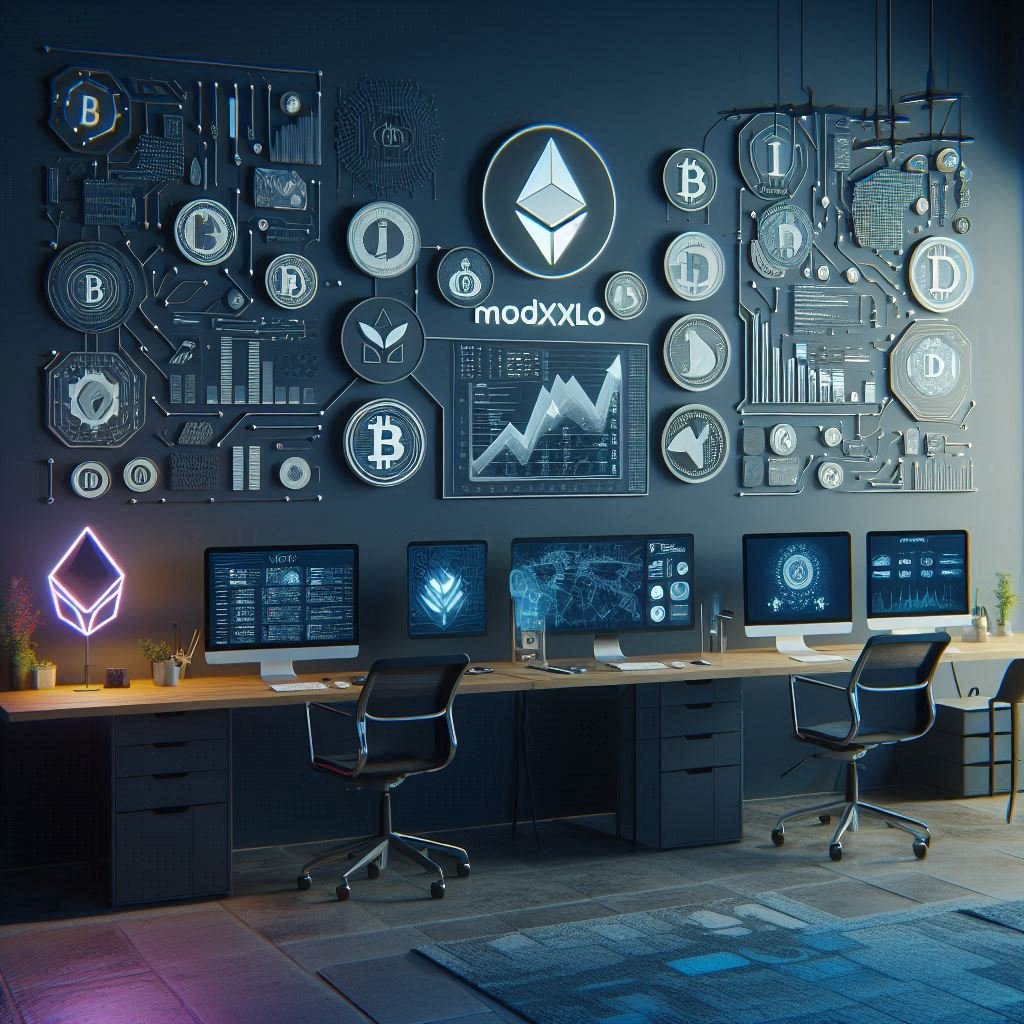The year 2024 promises continued growth for open-source blockchains, the lifeblood of a decentralized future. In contrast to permissioned blockchains with central authorities, open-source blockchains operate without a single entity in control. This fosters transparency, security, and a collaborative environment for innovation.
Why Open Source Matters in Blockchain
Here’s why open-source principles are crucial for blockchain technology:
- Transparency and Trust: Open-source code allows anyone to review the underlying codebase of a blockchain platform. This transparency fosters trust as users can verify how the network operates and ensure there’s no manipulation by a central authority.
- Security by Distribution: With the codebase publicly accessible, a global community of developers can scrutinize it for vulnerabilities. This distributed security model helps identify and address potential security flaws quickly.
- Community-Driven Innovation: An open-source approach fosters collaboration among developers worldwide. This leads to a faster pace of innovation, with developers constantly proposing and implementing improvements to the underlying blockchain technology.
- Permissionless Participation: Open-source blockchains are permissionless, meaning anyone can participate in the network as a validator or user. This fosters a more inclusive and democratic environment compared to permissioned blockchains with restricted access.
Open-Source Blockchain Examples in 2024
The open-source blockchain landscape is constantly evolving, with exciting projects shaping the future in 2024:
- Bitcoin (BTC): The pioneer of open-source blockchains, Bitcoin continues to be a significant player. Expected advancements in 2024 include the Lightning Network scaling solution becoming more widely adopted, enabling faster and cheaper Bitcoin transactions.
- Ethereum (ETH): Another leading open-source platform, Ethereum, is undergoing a significant upgrade known as Ethereum 2.0. This upgrade aims to improve scalability and security, paving the way for a wider range of decentralized applications (dApps) to be built on the Ethereum network.
- Cosmos (ATOM): Focusing on interoperability, Cosmos allows different blockchains to communicate with each other seamlessly. This is crucial for scaling blockchain technology and enabling the creation of a “multi-chain” future.
- Hyperledger Fabric: An open-source project hosted by The Linux Foundation, Hyperledger Fabric offers a modular blockchain framework designed for enterprise use cases. In 2024, expect to see increased adoption of Hyperledger Fabric by businesses seeking to implement private or consortium blockchains.
The Rise of dApps on Open-Source Blockchains
Open-source blockchains provide the foundation for a thriving ecosystem of decentralized applications (dApps). These are applications that operate on a blockchain network, eliminating the need for a central authority and offering greater transparency and control to users. In 2024, expect to see growth in dApps across various sectors, including:
- Decentralized Finance (DeFi): dApps enabling peer-to-peer lending, borrowing, and trading of cryptocurrencies without traditional financial institutions.
- Supply Chain Management: dApps for tracking goods and materials throughout the supply chain in a tamper-proof and transparent manner.
- Gaming: dApps powering new experiences in the gaming industry, such as play-to-earn models where players can earn cryptocurrencies by participating in games.
- Social Media: dApps offering censorship-resistant social media platforms where users control their data and privacy.
The Future of Open-Source Blockchain in 2024 and Beyond
As the open-source blockchain ecosystem matures in 2024, we can expect several key trends:
- Increased Enterprise Adoption: Businesses will increasingly leverage open-source blockchains for their efficiency, security, and transparency benefits across various industries.
- Focus on Scalability: Developers will continue to find innovative solutions to scalability challenges, making open-source blockchains more viable for large-scale applications.
- Regulatory Landscape Development: Governments worldwide will likely continue to develop regulations for blockchain technology, impacting open-source projects. However, the decentralized nature of open-source blockchains may pose challenges for traditional regulatory frameworks.
- Focus on Usability: Making open-source blockchains more user-friendly for everyday individuals will be critical for wider adoption and real-world impact.
By embracing open-source principles, blockchain technology has the potential to revolutionize various sectors and empower individuals with greater control over their data and interactions. As 2024 unfolds, the future of open-source blockchains promises exciting possibilities for a more decentralized and transparent world.
Additional Resources:
- Bitcoin: https://bitcoin.org/en/
- Ethereum: https://ethereum.org/en/
Open-Source Blockchain
While the world of open-source blockchains can seem complex, understanding the core principles can empower you to participate in this exciting technological revolution. Here’s a breakdown for beginners entering the open-source blockchain space in 2024:
How do Open-Source Blockchains Work?
Imagine a giant public ledger recording transactions. In open-source blockchains, everyone has access to this ledger, unlike traditional databases controlled by a single entity. Transactions are grouped into blocks, and each block is cryptographically linked to the previous one, forming a secure chain of data.
Key Concepts to Understand:
- Consensus Mechanisms: These mechanisms ensure agreement among participants on the validity of transactions added to the blockchain. Popular mechanisms include Proof of Work (PoW) used by Bitcoin and Proof of Stake (PoS) used by Ethereum 2.0.
- Nodes: Computers that validate transactions and maintain the blockchain network. Anyone can become a node on an open-source blockchain, contributing to its decentralized nature.
- Smart Contracts: Self-executing contracts stored on the blockchain. These contracts automate agreements between parties based on predefined conditions, eliminating the need for intermediaries.
Getting Involved in the Open-Source Blockchain Community
The open-source spirit encourages participation. Here are some ways to get involved:
- Learning Resources: Numerous online resources offer educational content on blockchain technology. Platforms like Coursera, edX, and Khan Academy provide introductory and advanced courses.
- Open-Source Projects: Explore popular open-source blockchain projects like Bitcoin, Ethereum, or Hyperledger Fabric. Many have dedicated communities and forums where you can learn and contribute.
- Contribute to Code: If you have coding experience, consider contributing to the development of open-source blockchain projects. This can involve bug fixes, feature improvements, or even proposing new functionalities.
- Community Events: Attend meetups, hackathons, and conferences focused on open-source blockchains. These events provide opportunities to network with developers, enthusiasts, and industry professionals.
Benefits of Participating in the Open-Source Blockchain Community
- Gain Knowledge: Immerse yourself in the cutting-edge world of blockchain technology and stay updated on the latest advancements.
- Develop Skills: Contribute to real-world projects and enhance your programming expertise, particularly in blockchain-specific languages like Solidity (used for Ethereum smart contracts).
- Network and Collaborate: Connect with a global community of passionate individuals shaping the future of blockchain technology.
- Make a Difference: Your contributions, big or small, can help advance open-source blockchain projects and foster a more decentralized and secure future.
Conclusion
Open-source blockchains represent a paradigm shift towards a more transparent, secure, and collaborative digital landscape. By understanding the core principles, getting involved in the community, and leveraging available resources, you can become a part of this exciting technological revolution and contribute to the future of open-source blockchains in 2024 and beyond.
FAQ’s
1. What’s the difference between open-source and permissioned blockchains?
- Open-Source Blockchains: Publicly accessible codebase, anyone can participate as a validator or user. This fosters transparency, security through distributed review, and innovation through community collaboration. Examples: Bitcoin, Ethereum.
- Permissioned Blockchains: Controlled by a central authority, granting access only to authorized participants. Offers faster transaction speeds but less transparency and decentralization. Examples: Hyperledger Fabric (for enterprise use cases).
2. How do open-source blockchains ensure security?
Open-source blockchains leverage several features for security:
- Cryptography: Transactions are cryptographically linked, making them tamper-proof.
- Distributed Ledger: Copies of the blockchain are maintained by multiple nodes, making it difficult to manipulate data.
- Consensus Mechanisms: Mechanisms like Proof of Work (PoW) or Proof of Stake (PoS) ensure agreement on the validity of transactions, preventing fraudulent activities.
3. What are some popular open-source blockchain projects?
- Bitcoin (BTC): The pioneer cryptocurrency and blockchain platform, known for its decentralized nature and secure transactions.
- Ethereum (ETH): A leading platform for smart contracts, enabling the development of decentralized applications (dApps).
- Cosmos (ATOM): Focuses on interoperability, allowing different blockchains to communicate seamlessly, fostering a “multi-chain” future.
- Hyperledger Fabric: An open-source framework designed for enterprise use cases, offering a modular and permissioned blockchain solution.
4. How can I get involved in the open-source blockchain community?
- Learning Resources: Online platforms like Coursera, edX, or Khan Academy offer educational content.
- Community Engagement: Explore project forums, attend meetups, and participate in hackathons focused on open-source blockchains.
- Code Contributions: If you have coding experience, consider contributing to open-source blockchain projects (bug fixes, feature improvements, etc.).
5. Is it safe to invest in open-source blockchain projects?
Open-source blockchains are still evolving, and the cryptocurrency market is inherently risky. While they offer exciting potential, conduct your own research and understand the risks before making any investment decisions.




Your point of view caught my eye and was very interesting. Thanks. I have a question for you. https://www.binance.com/kz/register?ref=RQUR4BEO